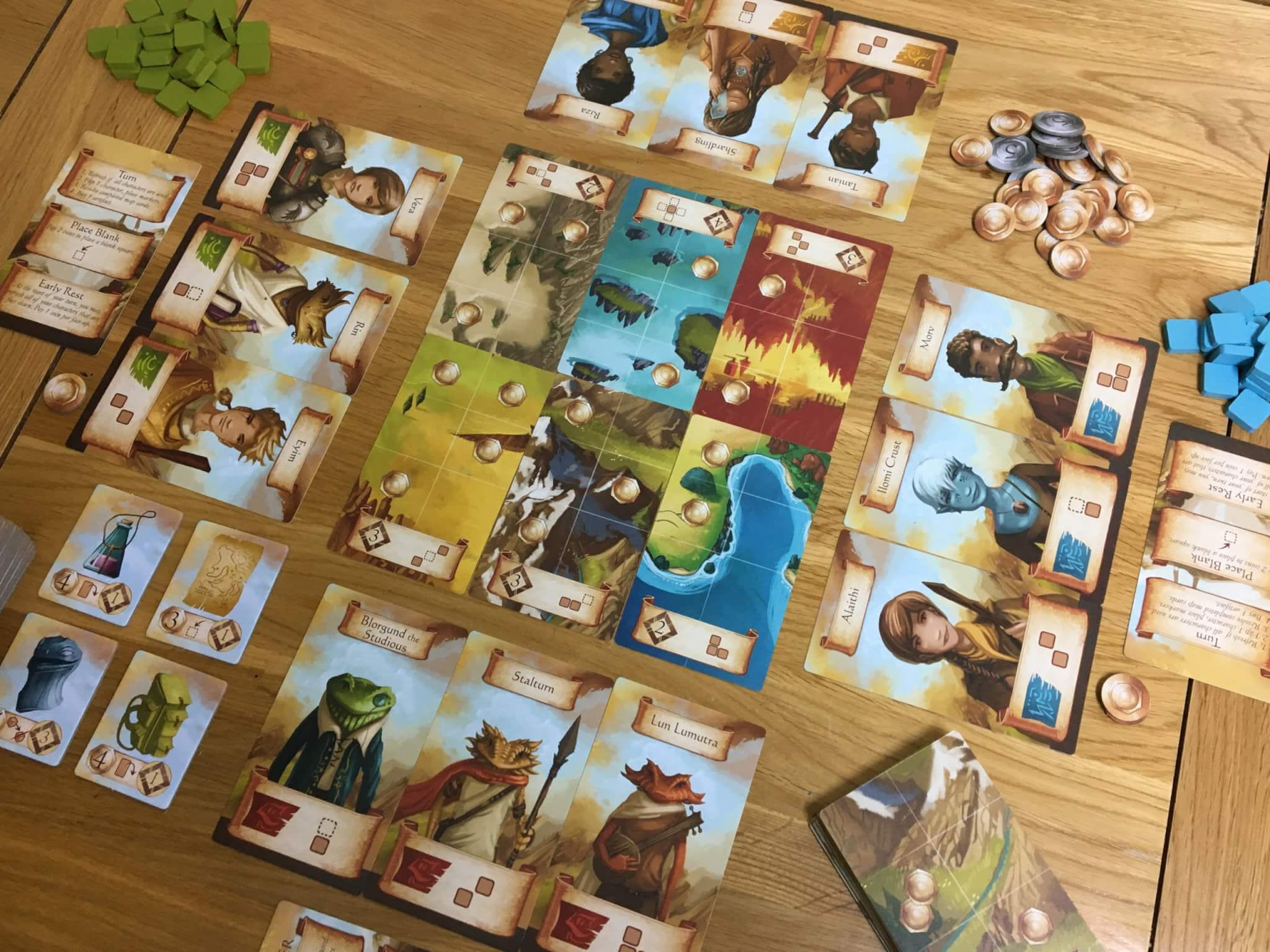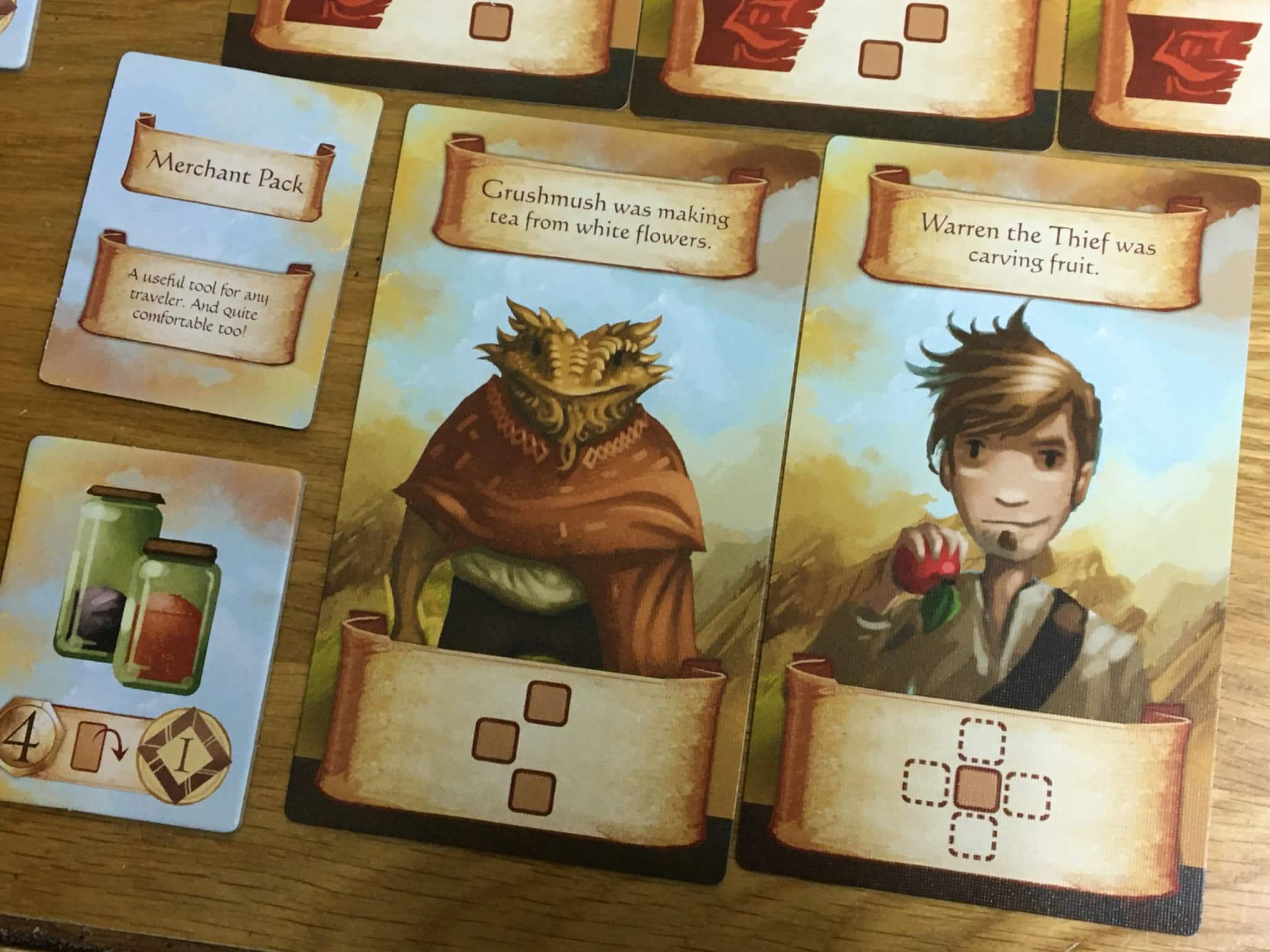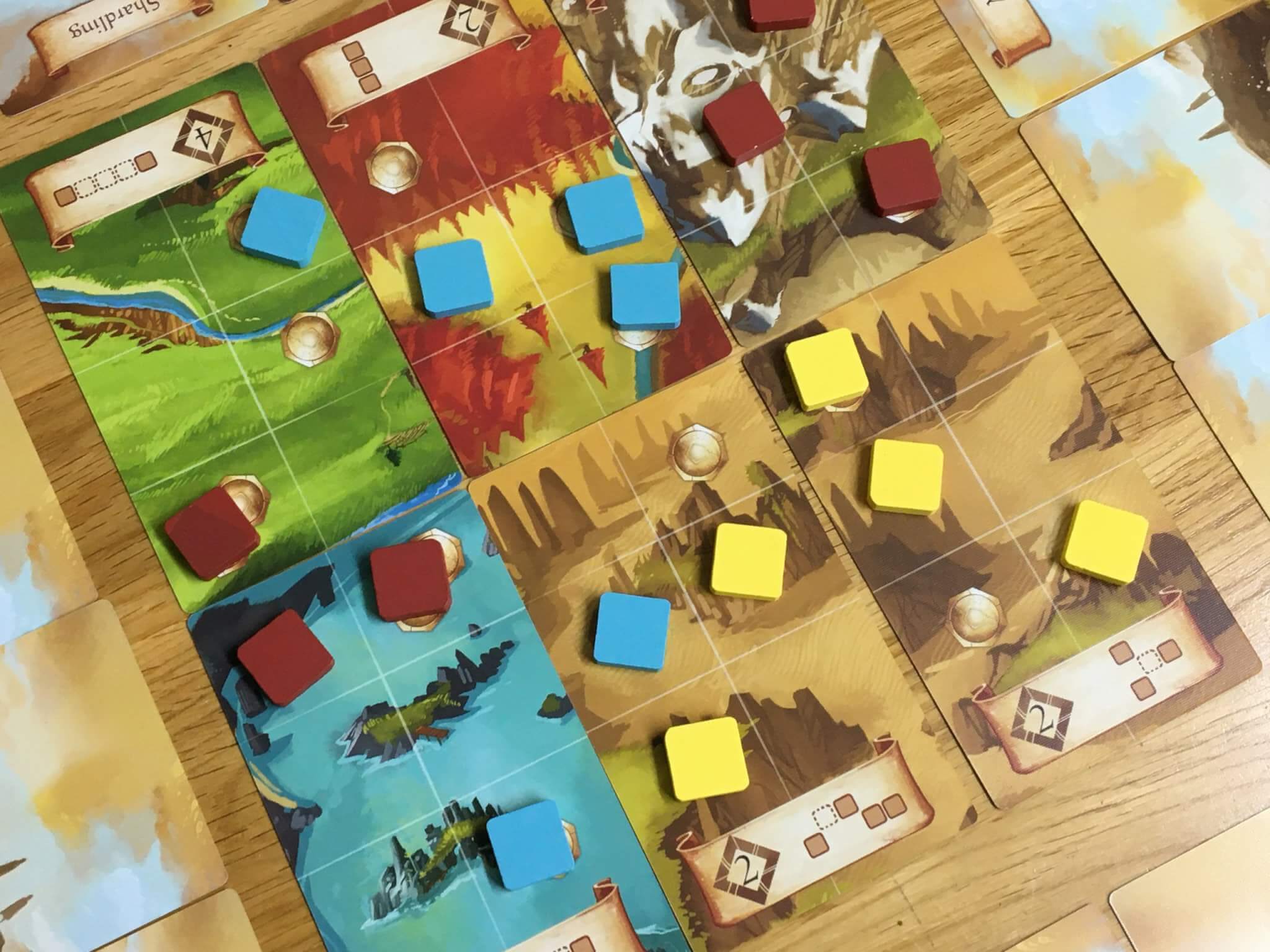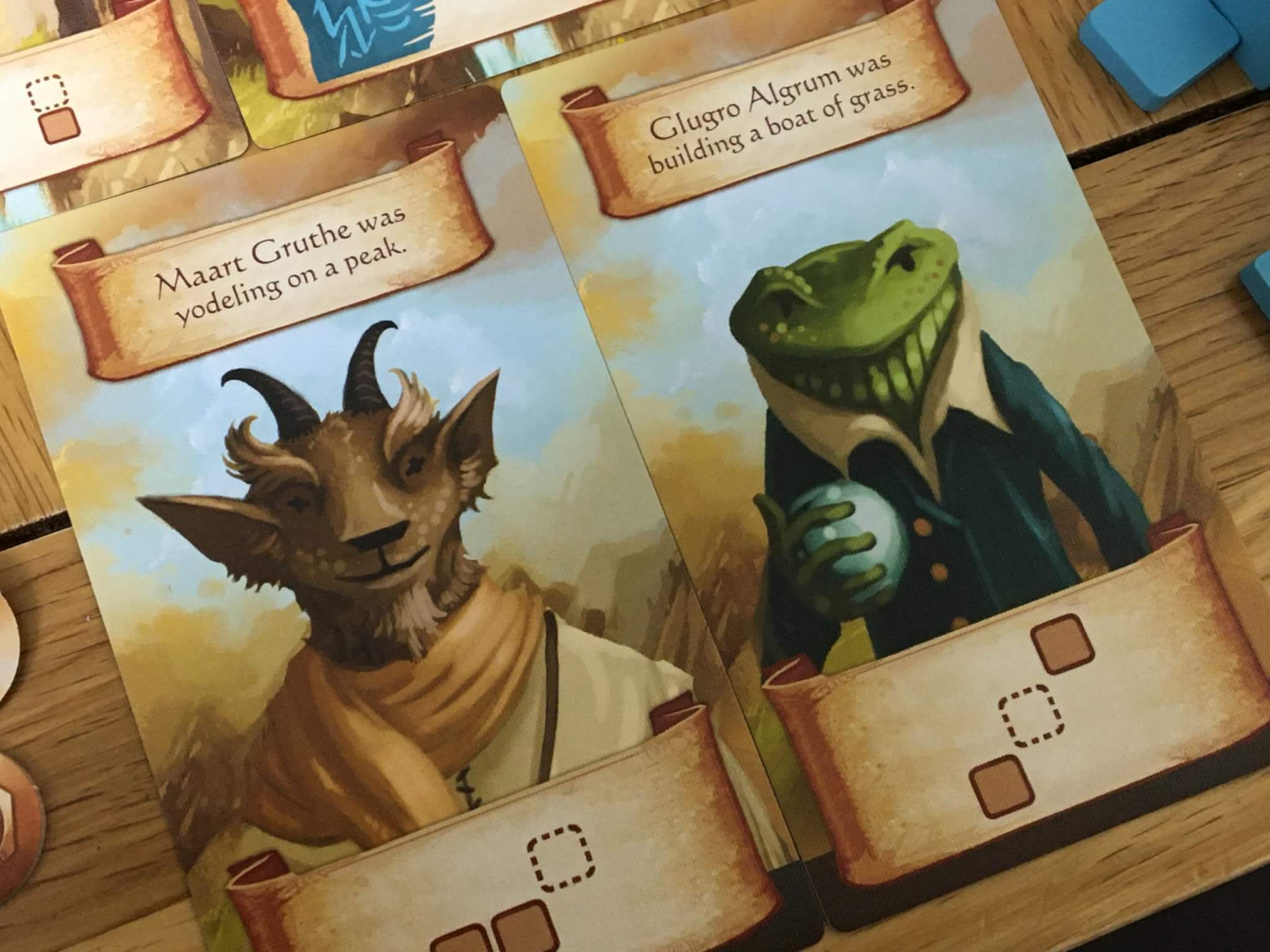Roam continues the walkabout theme of Near and Far, but leaves a smaller footprint
Whilst the box is much smaller and the gameplay a little lighter, Roam continues to expand Ryan Laukat’s existing universe both visually and thematically, with characters that are similar to both Above and Below and Near and Far and a completely unique art style.
Readers may recall that we loved Near and Far here at Big Boss Battle and we even listed it as one of our top five medium weight games a couple of Christmases ago. Despite how much I still enjoy it today, there’s no doubt that Near and Far is at least medium weight, and the learning curve for new players can be a little steep.
Roam, on the other hand, features the same superb artwork (also done by Ryan Laukat) as Above and Below and as the title suggests, it’s still about going walkabout in a whimsical setting. This time, rather than being a relatively complex worker placement game, Roam is a much more focused, stripped back experience that’s best described as area majority with a sprinkling of deckbuilding and hand management.

To set up, the players will shuffle a deck of character cards, having first carefully removed the three starting cards for each of up to four players. These cards will be placed with the character side face up, and then six will be drawn and placed on the other side (showing the map spaces) on the table. Each player then takes their three starting cards and places them character side up.
The only other components in the box are a set of “Fisherman’s Friend” style lozenges in each player colour, a bag of coin tokens, an outpost card and a small deck of artefact cards. The artefact cards are shuffled and a display is created, whilst the coins and outpost card go off to the side. I should mention that the artefacts and outpost elements are optional, but I’ll talk more about that later.
The game itself is a model of simplicity, and it’s one of the most easygoing and straightforward games that I’ve taught in a long time. Simply put, on their turn, a player will choose one of their face-up character cards, flip it, then place lozenges of their colour onto the board in exactly the pattern and orientation shown on the character card they just flipped.

This is easier shown than to describe in words, but basically, if a character card shows three brown squares in right-handed “L” shape, then that’s exactly what you’ll place onto the board. The lozenges can cross from one of the six cards onto another, but they cannot overlap other lozenges (unless you play with another variant, that I’ll also come to later) or leave the board.
Whenever doing this would cover one or more coins, the player who placed the lozenges takes those coins and adds them to their supply. Similarly, if placing lozenges would mean that all six spaces are filled on one or more cards, then the player (not always the active one) who has the most lozenges on that card will take the card and add it character side up to their tableau. Where there is a tie, the tied players bid lozenges to determine who wins the card.
This very simple gameplay loop simply means that players are going to use their characters to gain as much influence on each card as possible, whilst at the same time trying to focus on the cards that will flip to reveal characters that they feel are useful to build out their tableau. Each character is also worth points, and the cards with weaker placement bonuses tend to be worth more.

If using the optional artefact and outpost modules, there are a couple of other things to consider. Firstly, an artefact can be purchased at the end of any players turn for the value shown. Again, artefacts are worth points and therefore this is a viable strategy in itself, although each one also comes with a bonus that might enhance the placement of lozenges via your character cards.
The outpost card works slightly differently, and will be earned by the first player to completely encircle a single lozenge belonging to another player. If this happens again, then the outpost card can be passed from one player to another. In honesty, the outpost module is very small, very simple and quite niche — as in, the outpost isn’t often formed.
The game ends when any player has a total of ten cards in their tableau, which bearing in mind that everyone begins with three, means that seven need to be collected. At that time, points are scored across all character cards, all artefacts, the outpost card (if applicable) and any remaining coins. The player with the highest score is the winner.

The joy of Roam is in how simple it is to teach, learn and play and in how it never outstays its welcome. Each game lasts something like thirty to forty-five minutes with the length of the game pretty strictly linked to player count. The additional modules feel fairly “bolted on” and I do wonder if they were included to make the game feel like it was more complex, but the reality is that they are simple enough to include from the outset.
Another alternative mode is a simple rules change, and this allows two lozenges to be placed onto each space, one on top of the other. When this happens, the card will still be claimed once all six spaces are full, but now all lozenges (including those both on top and bottom of the stack) will be counted. This mode is weird, and I found it to be a bit like an “easy” mode, since it provides more placement options.
Despite these slightly weird variations (which feel a bit like there was some uncertainty about the base design, but to be fair, Laukat includes modules in all his games) I like Roam a lot. It’s a fun game that demands little of anyone in terms of set up time, teaching and becoming competitive, yet the gameplay rapidly ramps up into a compelling and close-run thing. Excellent components complete the picture, figuratively and literally.
You can find Roam on Amazon.
Love board games? Check out our list of the top board games we’ve reviewed.

Comments are closed.